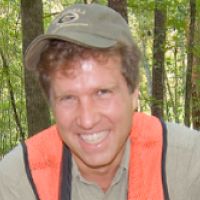Pachon et al., 2019
Predicting Saturated Hydraulic Conductivity with Rapid Estimates of Soil Microaggregation
Pachon, Julio C., Daniel Richter, Daniel Markewitz, Aaron Thompson, Anna Wade, Rachel Ryland, and Allan R. Bacon (2019)
ASA-CSSA-SSSA International Annual Meeting, 10-13 Nov. 2019, San Antonio, Texas
-
Calhoun, COLLABORATOR, GRAD STUDENT
-
Calhoun, INVESTIGATOR
-
Calhoun, INVESTIGATOR
-
Calhoun, Luquillo, INVESTIGATOR, COLLABORATOR
-
Calhoun, GRAD STUDENT
-
Calhoun, GRAD STUDENT
-
Calhoun, INVESTIGATOR
Abstract
Quantifications of saturated hydraulic conductivity, Ksat, in soils are central to characterize the movement of water and nutrients through soil and landscapes, to model and manage erosion, and to maintain or improve crop yields. Measuring Ksat, however, is challenging and time intensive, ultimately limiting our ability to characterize Ksat across landscapes and resulting in the development of pedotransfer functions. While most existing pedotransfer functions rely on direct estimates of soil texture (and possibly organic matter and bulk density), these estimates also carry appreciable time and labor costs. Subsequently, the opportunity exists to improve Ksat pedotransfer functions by building them with more rapidly attainable soil properties. We have hypothesized that accurate and precise Ksat predictions can be made from Munsell color and two 60-second particle size analyses by laser diffraction (each with a unique sample pre-treatment aimed at characterizing microaggregates). We test this hypothesis in 19 soil profiles within the Calhoun Critical Zone Observatory, where Ksat was directly measured with a permeameter at five depths (0-15, 15-45, 45-90, 90-150, and 150-250 cm). Using random forest models, our rapidly available quantifications of soil particle size and Munsell color, we are able to achieve an R-squared of 93%, RMSE= 4.51 cm/hr, MSPE= 20.32, and MAE= 3.33 cm/hr. We find that Munsell chroma, clay concentration, and the skewness of the microaggregates’ aggregating particles are the most important predictor variables in the model. Our findings not only show that Ksat can be modeled and predicted from rapidly available properties, thereby facilitating efficient Ksat quantifications across large sample sets, they also demonstrate that incorporating information regarding microaggregation is important to such attempts.
Citation
Pachon, Julio C., Daniel Richter, Daniel Markewitz, Aaron Thompson, Anna Wade, Rachel Ryland, and Allan R. Bacon (2019): Predicting Saturated Hydraulic Conductivity with Rapid Estimates of Soil Microaggregation. ASA-CSSA-SSSA International Annual Meeting, 10-13 Nov. 2019, San Antonio, Texas.
Explore Further







